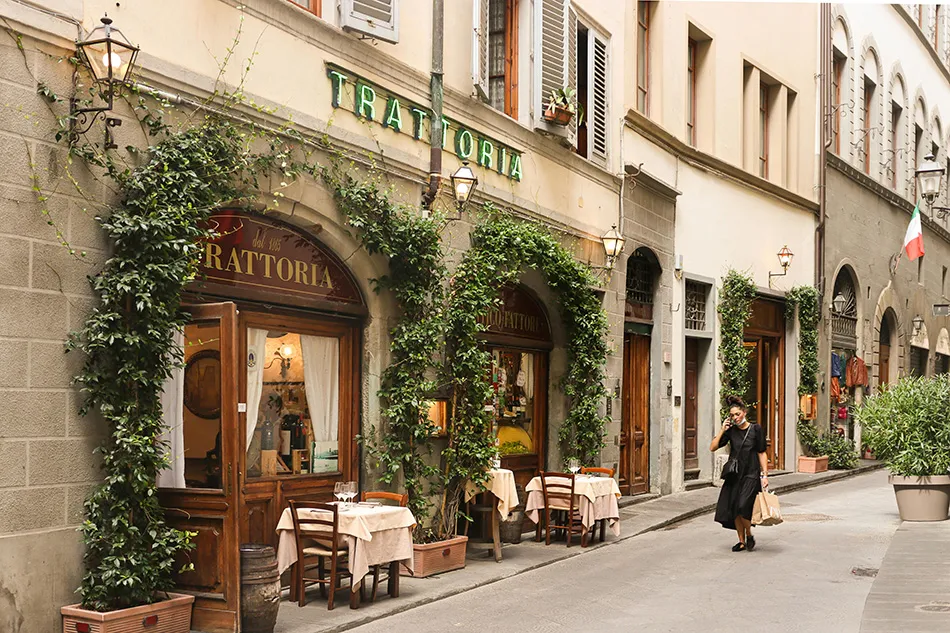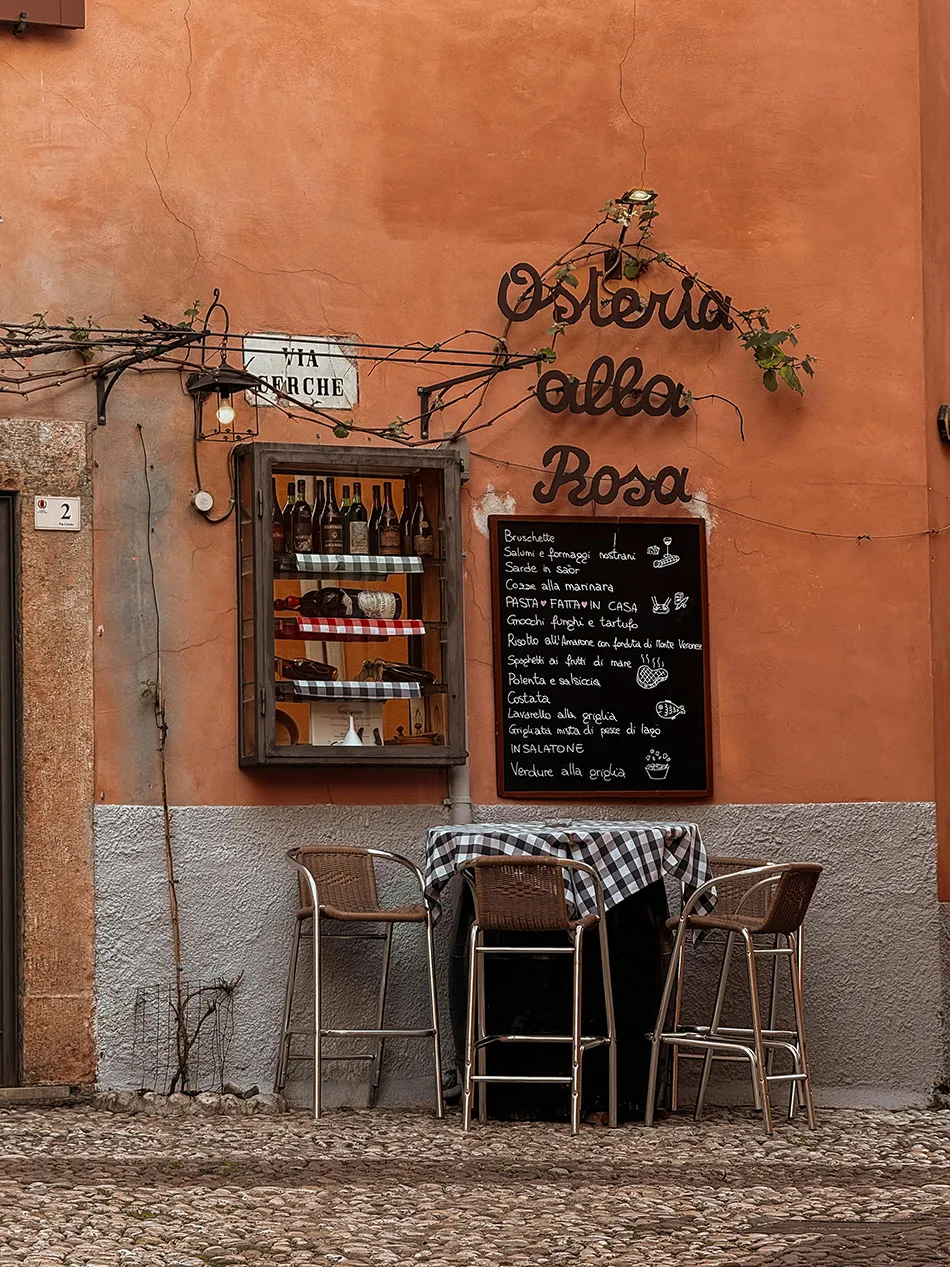The Italian Triad: Osteria, Trattoria and Restaurant - Deciphering Italy's Cultural Menu

Who has never walked into an Italian restaurant and wondered why some are called "trattoria" or "osteria" while others are simply "restaurants"? If you've ever wondered, you're not alone. These terms not only convey differences in the gastronomic offering, but also tell stories of the rich Italian culture and its relationship with food – something that goes far beyond a simple pizza or pasta.
For those who enjoy Italian cuisine (who doesn’t, right?), understanding these distinctions isn’t just a curiosity: it’s a guide to choosing exactly the type of experience you want to have. After all, each establishment offers a different relationship with food, wine and socializing, sacred elements in Italian culture.
Let's discover together this fascinating universe that, more than feeding the stomach, nourishes the soul with flavors, stories and centuries-old traditions.
Osteria: Where wine rules the table

Origin and essence
The osteria began as a simple and unpretentious place where Italians, mainly men, would gather after work to drink wine and chat. The term derives from the French "hosterie", which means "inn", and was originally intended to offer rest to travelers.
In the past, osterias rarely served food – the focus was on local wine and a friendly atmosphere. Over time, they began to offer simple dishes to accompany the drinks, always based on regional and seasonal products.
Distinctive features
Atmosphere: Rustic, noisy and relaxed – communal tables were (and still are) common
Menu: Limited, written on chalkboards, based on what is available that day
Prices: Generally the most affordable of the three types
Service: Informal and family-oriented, often led by the owner himself
Proposal: To promote local wine and home-cooked food in an unpretentious environment
In authentic osterias, you will find only a few dishes, often without any choice – you eat what has been prepared that day. The menu changes constantly, following the availability of local ingredients.
Trattoria: The heart of the Italian family

Origin and essence
The trattoria represents the natural evolution of the osteria, emerging as a family business where the "mamma" (or "nonna") ran the kitchen while the rest of the family ran the restaurant. The name comes from the Italian verb "trattare", which means "to negotiate" or "to deal with something", referring to the care of customers.
Unlike the osteria, the trattoria was born with a focus on food, offering complete meals prepared with traditional recipes passed down through generations.
Distinctive features
Atmosphere: Cozy, familiar and informal – usually decorated with checkered tablecloths and simplicity
Menu: Broader than the osteria, but still regional and seasonal, with traditional dishes
Prices: Moderate, with excellent value for money
Service: Personal and attentive, usually led by family members
Proposal: Celebrate home-cooked food and family recipes in generous portions
At a trattoria, you’ll feel like you’re dining at an Italian family’s home. It’s not uncommon for the owner to come to your table to suggest special dishes of the day or tell stories about the recipes served.
Restaurant: Sophistication at the table

Origin and essence
The restaurant, as a concept, emerged in France in the 18th century, but was quickly adopted by Italian culture as a more formal and refined establishment. The word comes from the French "restaurer" (to restore), initially referring to nutritious soups that "restored" strength.
In Italy, restaurants emerged to serve a more demanding clientele, interested in elaborate gastronomic experiences and impeccable service.
Distinctive features
Atmosphere: Elegant, exquisitely decorated, usually with well-spaced individual tables
Menu: Extensive and sophisticated, with creative interpretations of Italian cuisine
Prices: Higher, reflecting the quality of the ingredients and the experience offered
Service: Formal, performed by trained professionals following service etiquette
Proposal: To offer a refined gastronomic experience with careful presentation
In an authentic Italian restaurant, you will find an extensive wine list, a sommelier available for pairings and dishes that balance tradition and innovation with advanced culinary techniques.
How to choose? Tips for Brazilians in Italy and Brazil
In Italy

Research where locals eat: Establishments full of Italians are always a good sign
Stay away from tourist areas: The further away from tourist spots, the more authentic and accessible the experience will be.
Watch the times: Italians eat dinner late (after 8pm), and many authentic places don't serve before that.
Test your Italian: Places without English menus or photographs of the dishes tend to be more authentic
Ask for the "piatti del giorno": The dishes of the day usually represent the best the house has to offer
In Brazil

Check the origin of the owner: Establishments run by Italian families tend to preserve authenticity more
Look at the menu: The more focused on a specific region of Italy (rather than generic), the more authentic it tends to be.
Check the ingredients: Houses that import specific Italian products demonstrate commitment to authenticity
Ask for bread and olive oil: A good Italian place cares about the quality of these staples.
Pay attention to the environment: Even in Brazil, the concept (osteria, trattoria or restaurant) must be reflected in the environment and service.
What to choose based on your mood and occasion

For a relaxed happy hour with friends: Osteria
For a family dinner in a cozy atmosphere: Trattoria
To celebrate special dates with refinement: Restaurant
For an authentic Italian everyday experience: Trattoria
To enjoy wine with simple snacks: Osteria
To impress someone on a first date: Restaurant
Beyond the plate: Italian philosophy at the table

Understanding the difference between osteria, trattoria and restaurant helps us understand something much deeper about Italian culture: the way they view food not just as nutrition, but as a cultural expression and a moment of connection.
For Italians, a meal is a sacred ritual that brings people together, celebrates local ingredients and preserves traditions. Choosing between an osteria, a trattoria or a restaurant is not just about what you eat, but about the experience you want to have.
The next time you’re choosing where to enjoy an authentic Italian meal, remember: you’re not just selecting a place to eat, you’re deciding what kind of Italian history you want to experience at that moment.
And as the Italians say: "A tavola non si invecchia" – at the table, one never grows old. So enjoy every experience, every flavor and every moment of this fascinating gastronomic universe that, with its osterias, trattorias and restaurants, invites us not only to eat, but to celebrate life.
Author : Bella da Semana
Posted in: 05/12/2025
Last modified: 12/09/2025
1 comments